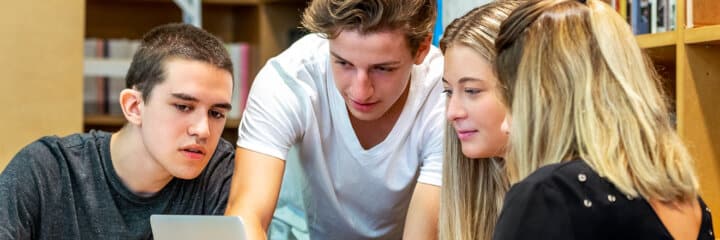Aktör och struktur i historieundervisning. Om utveckling av elevers historiska resonerande
Vad krävs för att elever ska utveckla sin förmåga att resonera historiskt i termer av aktör och struktur? Det har Anna-Lena Lilliestam undersökt i sin studie.
Anna-Lena Lilliestam
Ulla Runesson, professor, Högskolan i Jönköping. Bengt Schüllerqvist, professor, Karlstads universitet. Åke Ingerman, professor, Göteborgs universitet.
Lise Kvande, postdoktor NTNU, Norge
Göteborgs universitet
2013-12-06
Aktör och struktur i historieundervisning. Om utveckling av elevers historiska resonerande
Agent and structure in the history classroom. About the development of students’ historical reasoning
Institutionen för didaktik och pedagogisk profession
Agent and structure in the history classroom. About the development of students’ historical reasoning
Historical reasoning is the organizing of information about the past in order to describe, compare, and/or explain historical phenomena. In this study I investigate the ability to reason historically in terms of agent and structure in an educational context. What does it mean to reason historically in this specific way? What does it take for students to develop this ability?
Two main materials are used: texts, where students reason historically in terms of agent and structure, and lessons where the objective is to make it possible for the students to develop this ability. I look for qualitative similarities and differences in how the students reason, aiming at a pedagogically meaningful categorization that allows critical aspects of the ability to be identified.
The analysis of the lessons deepens this understanding. The difference between a temporal description of chains of events on one hand, and reasoning about agents and structures on the other, is shown to be crucial. The students must discern what reasoning in terms of agent and structure is: a synchronous discussion of the relative importance of structural factors and factors concerning agents in a historical situation. Students must also discern that structures can be of different kinds, as can agents; that relevant factors must be selected; that connections between the factors should be made explicit; that these factors may be developed by further explanation, by an assessment of their relative significance, by making comparisons, or by making causal connections.
The results also indicate that the objects of learning tend to change when enacted in the classroom: from the ability to reason historically towards the historical content, and towards temporal accounts of chains of action. A relationship is seen between the teaching in the different classes and how the students reason. Counterfactual reasoning is found to be useful in making it possible for the students to develop their understanding of structures, and as a tool for formative assessment.
Relaterade länkar

Juridik
 Gy–Vux
Gy–Vux
Fysisk aktivitet och motorik i förskolan
 Fsk
Fsk


